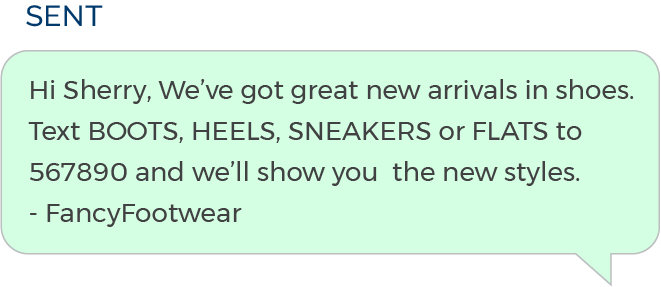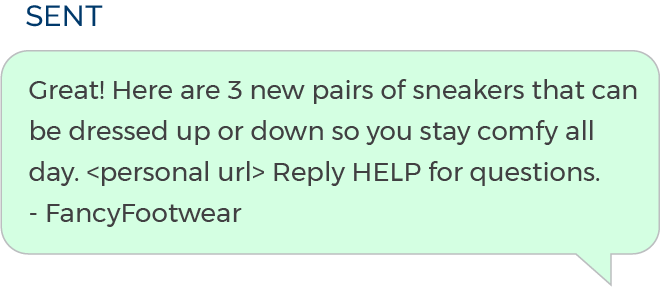
All it takes is 2 easy steps
If you're a winner, we will send you $100 Amazon gift card at Dreamforce!


Interactive content has been touted as the future of storytelling for marketing. But consider putting the human in interactive content, transforming the experience to purposeful conversation with SMS messages.
SnapApp defines interactive content as “Content that requires the participants’ active engagement — more than simply reading or watching. In return for that engagement, participants receive real-time, hyper-relevant results they care about.”
This sounds pretty wonderful when compared to the self-serving, static content and irrelevant emails that so many brands push out to consumers.
You may think of quizzes, assessments, ROI calculators, and dynamic infographics when the concept of interactive content comes up. And when done well, those do fit SnapApp’s definition.
But they are still, for the most part, one-way content. There’s an end date to the engagement. Once you’ve taken the quiz and learned which is your spirit animal, you’re not likely to take it again. Its value has been played out.
A conversation is an active exchange of ideas. This infers more than one participant. And it also allows for a following of those ideas to hone in on what’s meaningful to someone.
Relevance is a prerequisite for a continuing conversation. And businesses need to have the flexibility when communicating to adapt to what their prospects and customers want to talk about.
Your boutique may have a special on boots, but if your customer is interested in tennis shoes, your conversation will be short lived.
However, if you can let your customers steer the conversation to their interests while still being responsive, you have a huge opportunity to continue the conversation.
Advanced text messaging platforms enable businesses to use keywords to allow prospects and customers to initiate conversations. But you can also initiate conversations with them by giving them choices.
Please note: In the conversations below, green represents an automated conversation, yellow represents a 1:1 conversation.







The advantage of using SMS messages to create purposeful conversations is that they motivate inquiry and action relevant to your customer.
In the series above:
If you want to have more purposeful conversations with your customers, try automated text messaging that alerts you when to step in and keep the conversation flowing.
Stay updated on business text messaging
Text MAGIC for Demo to
USA: 36343
AUS: (61)409564682
UK & ROW: +44 7860017509
Email: care@sms-magic.com